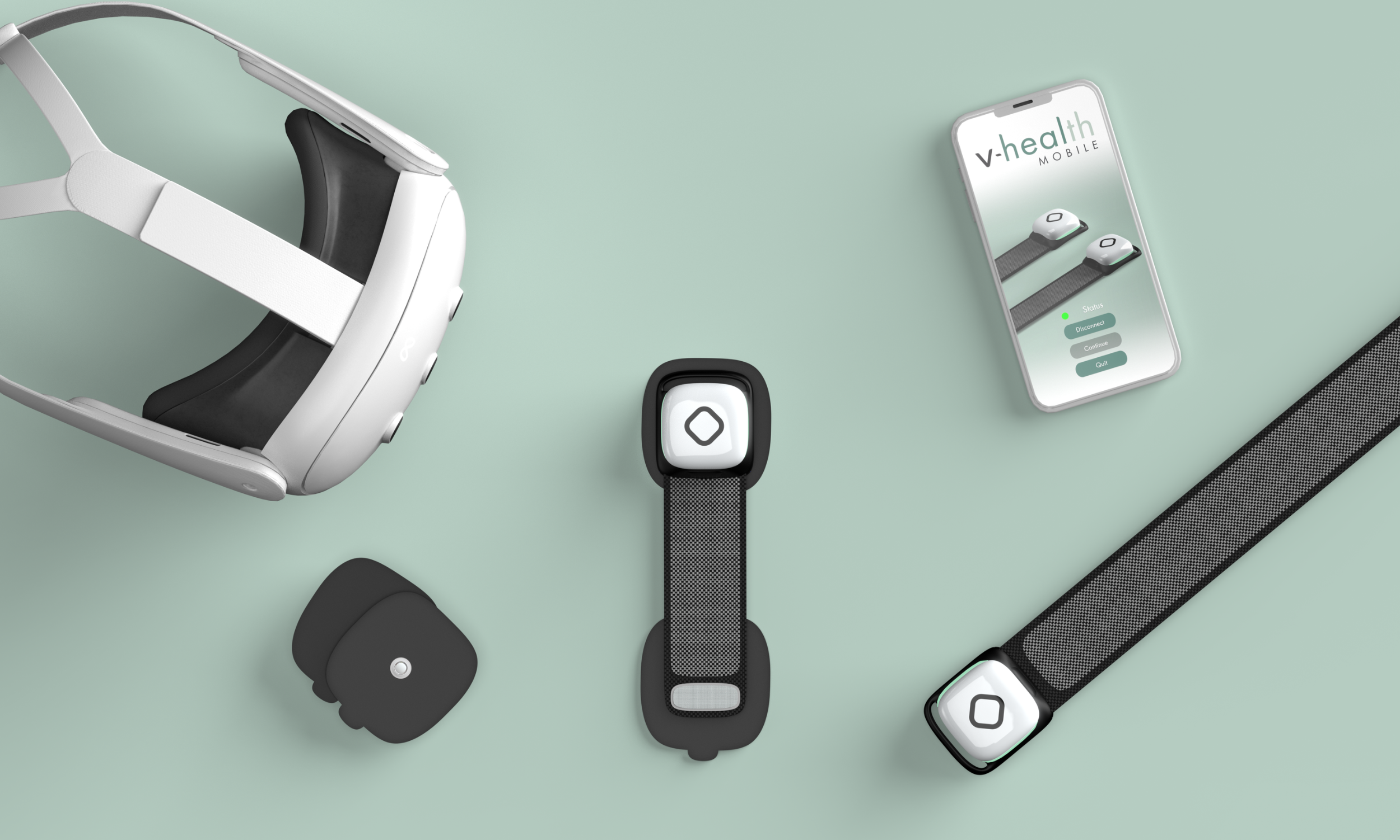Introducing v-health: Redefining Recovery
v-health is here to redefine recovery, empowering individuals to regain their health and independence.
v-health is an innovative solution that bridges physical rehabilitation with real-world functionality. Combining electrical muscle stimulation (EMS) with extended reality (XR) creates an engaging, interactive environment tailored to upper limb recovery.
The EMS technology supports neuromuscular activation, helping users regain strength and movement, while XR adds a layer of meaningful engagement, replicating everyday tasks or activities in a virtual setting. This is particularly valuable for patients recovering from neurological conditions, as it promotes functional movement in motivating and measurable ways.
What’s most exciting is the potential to empower individuals to work towards independence—not just in clinical settings but also at home. It’s a tool that aligns with the core of therapy: helping people return to the activities that matter most to their daily lives.
What is v-health?
v-health is a first-of-its-kind recovery platform that integrates virtual reality (VR) with our patented Neuromuscular Electrical Stimulation (NMES) wearable, eir bands to deliver immersive, engaging, and personalised rehabilitation experiences.
The eir bands are designed to recreate human interactions and movements within virtual environments, allowing users to re-learn upper limb movements through real-time physical interactions in digital settings.
By combining our expertise in muscle haptics with extended reality (XR), v-health creates an innovative approach to rehabilitation that bridges the gap between technology and human function.
The platform is designed to address the unique needs of both patients and clinicians:
For Patients: v-health provides enhanced engagement through gamified VR environments, extended therapy time with at-home recovery options, and a fully personalised rehabilitation experience tailored to individual needs.
For Clinicians: The platform optimises workflow, reduces time spent on repetitive tasks, and ensures better patient management, leading to improved recovery outcomes.
Why v-health Matters?
Neuromuscular recovery is often long and challenging, requiring repetition and sustainable effort. v-health aims to simplify and enhance this process by providing solutions that are:
Engaging: Turn therapy into an interactive and motivating experience.
Efficient: Increase repetition with targeted, data-driven therapy.
Effective: Achieve measurable outcomes through the integration of electrical stimulation and interactive virtual & mobile games.
Co-developed with 36 Therapists
The development of v-health has been guided by our ongoing research and collaboration with therapists and patients. From feasibility tests to user studies, our approach has been rooted in scientific validation and feedback.
Effects of Immersive Electrical Muscle Stimulation on Exercise Intensity
We conducted a study [1] on 26 healthy individuals to compare their physiological and mood responses during virtual reality (VR) training with and without Electrical Muscle Stimulation (EMS).Key Findings: 90% of participants preferred the version with EMS, experienced more exertion and had higher muscle soreness the next day after a workout. These findings highlight the potential of EMS-enhanced virtual exercise for physical training and increased adherence to training.
Read MoreFeasibility Study with Stroke Patients
An early feasibility test of the v-health platform was conducted with 14 neurological patients (11 stroke survivors and 3 spinal cord injury patients), in 4 clinics across the UK and Belgium.
Patients engaged in four XR-based games and one mobile game, each incorporating Functional Electrical Stimulation (FES) for 10-15 minutes, focusing on hand and wrist mobility.
Feedback: Patients found XR highly engaging, appreciating the direct link between their movements and the stimulation. Clinicians highlighted the platform’s ease of setup and real-time adjustability, which allows for personalised rehabilitation tailored to individual needs.
Read More
[1]: Hoolahan, K., Isakov, I., & Chan, K. C. (2024). An Investigation into the Effects of Virtual Reality and Electrical Muscle Stimulation on Mood, Exertion and Muscular Fatigue. International Journal of Virtual Reality, 24(1), 46-78.










